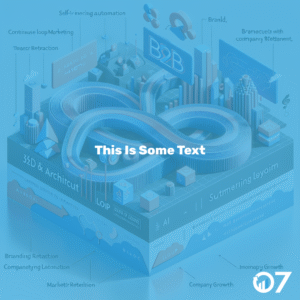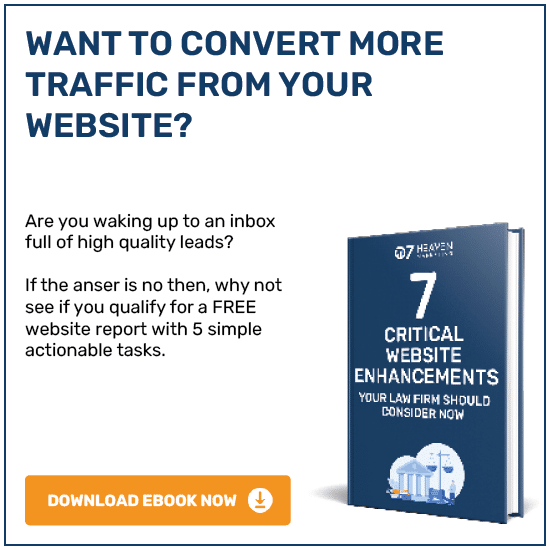Web design for small businesses isn’t just about aesthetics; it’s a crucial strategy for standing out in today’s digital marketplace. By reading on, you’ll discover how a tailored web design can elevate your SME’s online presence and drive success.
The Importance of Web Design For Small Businesses
In today’s digital-first world, the role of web design in shaping the success of small and medium-sized enterprises (SMEs) cannot be overstated. As you delve into this section, you’ll uncover why a stellar web presence is not just optional but essential for SMEs looking to thrive.
Why It Matters
First impressions are pivotal in the online arena. Studies show that it takes mere seconds for visitors to form an opinion about your website, and by extension, your business. A well-designed website immediately conveys professionalism, quality, and trustworthiness. It sets the tone for customer engagement, signaling to potential clients that your SME values excellence in every interaction. Conversely, a poorly designed site can repel visitors before they’ve even explored what you have to offer, underscoring the critical role of web design in attracting and retaining customers.
Moreover, your website acts as the centrepiece of your digital marketing efforts. It’s where all your online paths converge, from social media to email campaigns. A cohesive, well-thought-out design enhances brand consistency and recognition, making your business memorable in a crowded marketplace.
Cost-Effective Marketing
In the realm of SMEs, budgeting is always a consideration. Herein lies the beauty of investing in web design: it’s a marketing powerhouse disguised as an upfront cost. Once your website is live, it works round-the-clock, promoting your business without the need for constant, additional investment. It’s where your marketing materials live, serving as a hub for your products or services, customer testimonials, and contact information.
A strategic web design not only draws visitors in but also guides them towards making a conversion – whether that’s making a purchase, signing up for a newsletter, or making an enquiry. This seamless integration of design and functionality ensures your marketing efforts yield a high return on investment, making it an indispensable tool for business growth.
Building Trust and Credibility
Trust is the cornerstone of any successful business relationship, especially for SMEs competing in a global market. A professional web design speaks volumes about your business’s credibility. It shows you’re committed to providing value and quality to your customers. Features like user-friendly navigation, fast loading times, and secure browsing (HTTPS) are non-negotiables for a trustworthy site.
Moreover, incorporating elements like customer reviews, case studies, and clear contact information further cements your status as a reliable entity. These components not only enhance the user experience but also build a solid foundation of trust with your audience.
In conclusion, the importance of web design for small businesses transcends aesthetic appeal. It’s a critical tool for making a strong first impression, executing cost-effective marketing, and building trust and credibility with your audience. As we move forward, consider our web design services to transform your online presence and propel your business to new heights.
Key Elements of Successful SME Web Design
Effective web design serves as the backbone of any small and medium-sized enterprise (SME) looking to make its mark online. As we delve into the key components that forge a successful web presence, you’ll understand how these elements not only enhance the look of your website but also its functionality and user engagement.
User Experience (UX) Fundamentals
The cornerstone of successful web design lies in its user experience (UX). A site that’s easy to navigate and engaging can significantly reduce bounce rates and encourage visitors to stay longer, exploring what your SME has to offer. The key to achieving this is understanding your audience: what they want, what they need, and how they navigate your site. Implementing intuitive navigation, fast load times, and accessible content ensures your website is user-friendly.
Moreover, engaging content plays a vital role in keeping visitors interested. Incorporating various media types, such as images, videos, and infographics, can help explain your products or services more effectively than text alone. Each piece of content should serve a purpose, guiding visitors through your site and towards making a decision, such as a purchase or enquiry.
Responsive Design
In today’s mobile-first world, your website must perform flawlessly across all devices. Responsive design ensures your site automatically adjusts to the screen it’s being viewed on, providing a seamless experience whether on a desktop, tablet, or smartphone. This adaptability is crucial, as a significant portion of internet traffic comes from mobile devices.
Not only does responsive design improve the user experience, but it also influences your website’s search engine ranking. Google prioritizes mobile-friendly websites in its search results, meaning a responsive site can help improve your visibility online. Ensuring your website is accessible and enjoyable to use on any device is a non-negotiable element of modern web design.
SEO Strategies
Search engine optimization (SEO) should be woven into the fabric of your web design process from the start. By integrating SEO strategies, such as keyword research and on-page optimization, you make your website more visible to search engines and, consequently, to potential customers. Elements like meta tags, headings, and alt text play a significant role in how search engines understand and rank your site.
Furthermore, creating quality content that addresses the needs and questions of your target audience can improve your site’s relevance and authority, leading to higher rankings. Incorporating internal links within your content not only helps with SEO but also enhances the user experience by making it easier to navigate your site and discover more valuable information.
In conclusion, mastering the key elements of web design is essential for any SME aiming to establish a strong online presence. From ensuring a stellar user experience to adopting a mobile-first approach and integrating SEO from the ground up, these principles are fundamental to designing a website that attracts, engages, and converts your target audience. As you continue to build your digital footprint, consider exploring our web design services for expert guidance and support.
Trends For Web Design For Small Businesses
As we navigate the ever-evolving digital landscape, staying abreast of the latest web design trends is crucial for small businesses aiming to stand out online. This section delves into the aesthetics and functionalities that are shaping successful small business websites today, ensuring your digital presence is both modern and effective.
Minimalism and Simplicity
The trend towards minimalism and simplicity in web design continues to dominate, driven by the desire for quicker loading times and a more straightforward user experience. This approach involves stripping away unnecessary elements and focusing on what’s truly essential, making it easier for visitors to navigate your site and find what they’re looking for. A minimalist design doesn’t just improve usability; it also creates a professional appearance that instils confidence in your business.
In implementing a minimalist design, consider the use of white space, which helps reduce cognitive load and makes your content more digestible. Fonts, colours, and imagery should be selected with care to ensure they contribute to a coherent and focused message. This strategic simplification helps highlight your key offerings and calls to action, making it clear to visitors how they can engage with your business.
Interactive Elements
Interactive elements can significantly enhance the user experience by making your website more engaging and memorable. From quizzes and polls to interactive infographics and videos, these features encourage users to spend more time on your site, exploring your content and learning about your offerings. Moreover, interactive elements can provide valuable insights into your audience’s preferences and behaviours, informing your marketing strategies and product development.
However, it’s important to balance interactivity with usability. Interactive features should be intuitive and add value to the user’s journey, rather than being gimmicks that detract from the overall experience. When done right, integrating interactive elements into your web design can transform passive visitors into active participants, fostering a deeper connection with your brand.
Personalisation
In today’s competitive online marketplace, personalisation can be a game-changer for small businesses. By tailoring the web experience to individual visitors, you can increase engagement and conversion rates. This could mean displaying content, offers, or product recommendations based on the user’s past interactions with your site, their location, or their behaviour during the current visit.
Personalisation requires a sophisticated understanding of your audience segments and the ability to deliver content dynamically, based on user data. While this may seem daunting for small businesses, even simple personalisation tactics can make a significant difference. For example, using a visitor’s name in email marketing or suggesting products similar to those they’ve shown interest in can create a more engaging and relevant user experience.
Implementing these web design trends—minimalism and simplicity, interactive elements, and personalisation—can significantly enhance your small business’s online presence. By focusing on the aesthetics and functionalities that resonate with today’s internet users, you can ensure your website not only attracts but also retains and converts your target audience. For more insights into creating a compelling online presence, explore our web design services.
Implementing Your Web Design For Small Businesses Project
Embarking on a web design project is a pivotal moment for any small and medium-sized enterprise (SME). It’s a step that can set your business on a path to digital success. In this section, we’ll guide you through selecting the right partner, budgeting effectively, and managing the project to ensure a smooth process and a result that exceeds your expectations.
Choosing the Right Web Design Partner
Finding a web design partner who truly grasps the unique needs of your SME is the first step toward a successful project. Look for agencies or freelancers with a track record of working with businesses similar to yours. They should be able to show you examples of their work that demonstrate their ability to deliver not just visually appealing, but also functional websites that meet the specific objectives of SMEs.
When evaluating potential partners, communication is key. You need someone who listens to your ideas and translates them into a digital solution that aligns with your business goals. A good partner will ask questions about your target audience, your business processes, and how you envision your website supporting your business growth. Remember, it’s not just about finding a skilled designer; it’s about finding a team or individual who is a good fit for your business culture and goals.
Budgeting for Success
Budgeting for your web design project requires a balance between affordability and quality. Start by defining the scope of your project clearly; knowing exactly what you need will help prevent scope creep and unexpected costs. Allocate your budget across the essential elements of your project, including design, development, content creation, and, importantly, testing and optimisation.
It’s wise to reserve a portion of your budget for post-launch activities, such as marketing your new site and making iterative improvements based on user feedback. Remember, a website is not a static entity; it’s a dynamic part of your business that will evolve over time. Prioritising your spending on the areas that will have the most significant impact on your goals can help ensure your investment delivers a solid return.
Project Management and Communication
Effective project management and open lines of communication are the backbone of any successful web design project. Establish a clear timeline and set milestones from the outset, ensuring both you and your design partner are aligned on expectations and delivery dates. Regular check-ins and updates will keep the project on track and allow for adjustments as needed.
Using project management tools can facilitate smoother communication, allowing you to share feedback, files, and updates efficiently. Be clear about your expectations, but also be open to suggestions from your design team. They bring expertise and experience that can enhance your project in ways you might not have considered.
In implementing your web design project, taking the time to choose the right partner, budget effectively, and manage the project with clear communication will lay the foundation for a successful outcome. Your new website will not only look great but also perform well, providing a solid platform for your business’s digital presence. For further guidance, explore our web design services to see how we can help bring your vision to life.
Conclusion
As we’ve explored throughout this series, the web design journey for small and medium-sized enterprises (SMEs) encompasses several key considerations. From the initial steps of selecting the right web design partner who understands the unique needs of SMEs, to effectively budgeting for your project without compromising on quality, and ensuring smooth project management and clear communication throughout the process. The goal is to create a digital presence that not only looks appealing but is also functional, user-friendly, and aligned with your business objectives.
Reflecting on these elements, it’s clear that a successful web design project requires careful planning, collaboration, and ongoing engagement. But, how does your SME approach the web design process? Are you considering a redesign to enhance your online presence, or perhaps you’re embarking on your first web design project?
For further insights and guidance, we invite you to explore our blog at 07hm.co.uk/blog. Here, you’ll find a wealth of information tailored to the needs and challenges of SMEs navigating the digital landscape. Additionally, if you have specific questions or need personalised advice, don’t hesitate to reach out to us via email at info@07hm.co.uk or telephone on 01702 410663.
As you consider your next steps in web design, we also recommend checking authoritative sources such as Smashing Magazine for the latest trends, techniques, and case studies in web design and development. Their comprehensive articles and resources can provide valuable perspectives and inspiration for your project.
In conclusion, the journey to a successful web design for small businesses might seem daunting, but with the right approach and support, it can lead to significant rewards, including enhanced online visibility, improved user engagement, and, ultimately, business growth. What steps will you take to ensure your web design project is a success?






